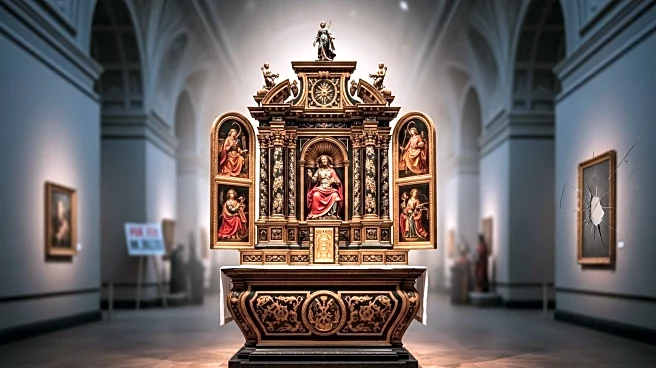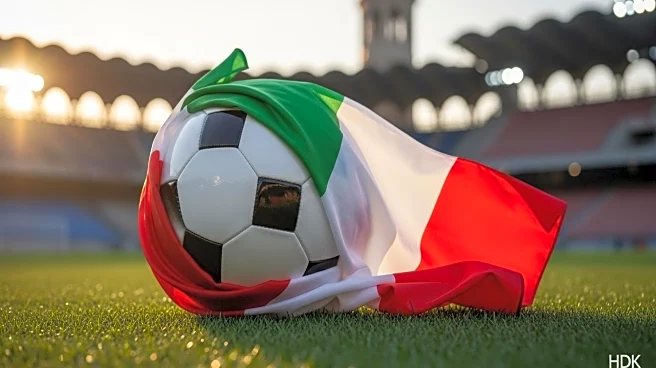What's Happening?
Italian politicians have expressed outrage over the return of a Renaissance altarpiece by Venetian painter Vittore Carpaccio to Slovenia. The artwork, titled 'Madonna and Child Enthroned with Six Saints,' was originally created for the Church of St. Francis of Assisi in Piran, a town historically part of Istria, now divided between Italy, Slovenia, and Croatia. The painting was removed from the region in 1940 for safeguarding during World War II and stored in Padua, Italy. Recently, it was returned to Piran following lobbying by Franciscan friars in Padua. This move has sparked criticism from Italian right-wing politicians, who view the return as a betrayal of Istrian exiles who fled the region post-World War II.
Why It's Important?
The return of the altarpiece has significant cultural and political implications. For Italy, it represents a loss of cultural heritage, as the painting is considered part of Italian history due to its Venetian origins. The decision has stirred emotions among Istrian exiles and their descendants, who feel a sense of loss over the return. Conversely, Slovenia celebrates the return as a restoration of cultural heritage, allowing the painting to be viewed in its original setting. This event highlights ongoing tensions between Italy and Slovenia regarding historical claims and cultural heritage, reflecting broader issues of national identity and historical memory in Europe.
What's Next?
The painting is set to be officially installed in the Church of St. Francis in Piran on December 27, following restoration work. The event may further fuel political discourse in Italy, especially among right-wing parties who oppose the return. The Slovenian government is likely to continue celebrating the decision, potentially strengthening cultural ties within the region. The situation may prompt discussions on international cultural heritage policies and the handling of historical artworks displaced during conflicts.














